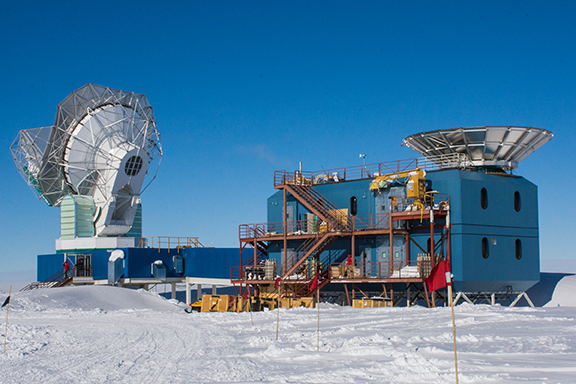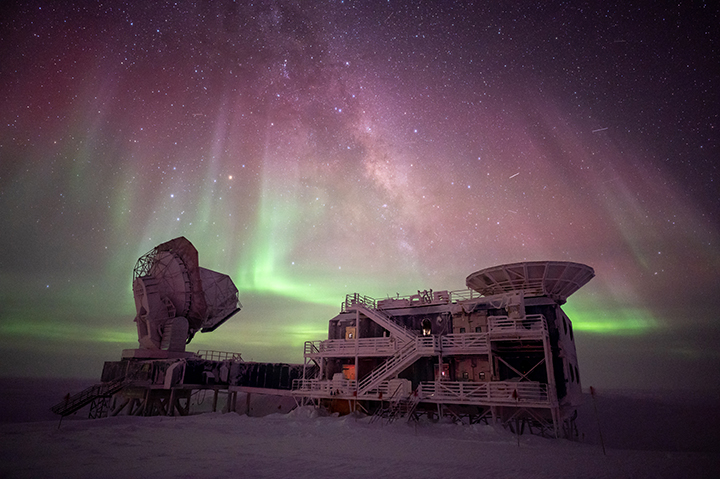Research Update: Scientists improve constraints on Physics of the Big Bang from the South PolePosted November 16, 2021
At the start of the Big Bang, the rapid expansion of the Universe is predicted to have generated Primordial Gravitational Waves (PGW) that can only be seen as a faint pattern of Cosmic Microwave Background radiation. 
Photo Credit: Mike Lucibella
The Dark Sector Lab at Amundsen-Scott South Pole Station is home to the South Pole Telescope, left, and BICEP-3 experiments. Both telescopes are using the leftover glow from the Big Bang, called the cosmic microwave background, to study the early evolution of the universe.
A study published in Physics Research Letters has used data from the BICEP/Keck experiments at the South Pole to refine models of how this expansion of space may have taken place in the early Universe. In recent years, researchers from the BICEP/Keck collaboration have used an array of increasingly powerful telescopes at the South Pole, operating at many different frequencies or colors of microwave light, to study the cosmos. Researchers have used their most recent data to separate out polarized patterns in the light from our own galaxy's dust and radio emission from the Cosmic Microwave Background, the ancient light that comes from the early Universe. In that ancient light, they have distinguished the expected patterns caused by its bending as it traveled past massive clusters of galaxies, as predicted by Einstein, from the possible faint patterns of primordial gravitational waves. While the latest results do not detect primordial gravitational waves, they set limits on them that narrow the range of models that can explain the early expansion of the Universe. Prospects for the future look bright, as the most favored of the remaining class of models predict primordial gravitational waves at levels that should be detected or ruled out with coming data from telescopes at the South Pole. |
Research Update: Scientists improve constraints on Physics of the Big Bang from the South Pole



For USAP Participants |
For The Public |
For Researchers and EducatorsContact UsU.S. National Science FoundationOffice of Polar Programs Geosciences Directorate 2415 Eisenhower Avenue, Suite W7100 Alexandria, VA 22314 Sign up for the NSF Office of Polar Programs newsletter and events. Feedback Form |


